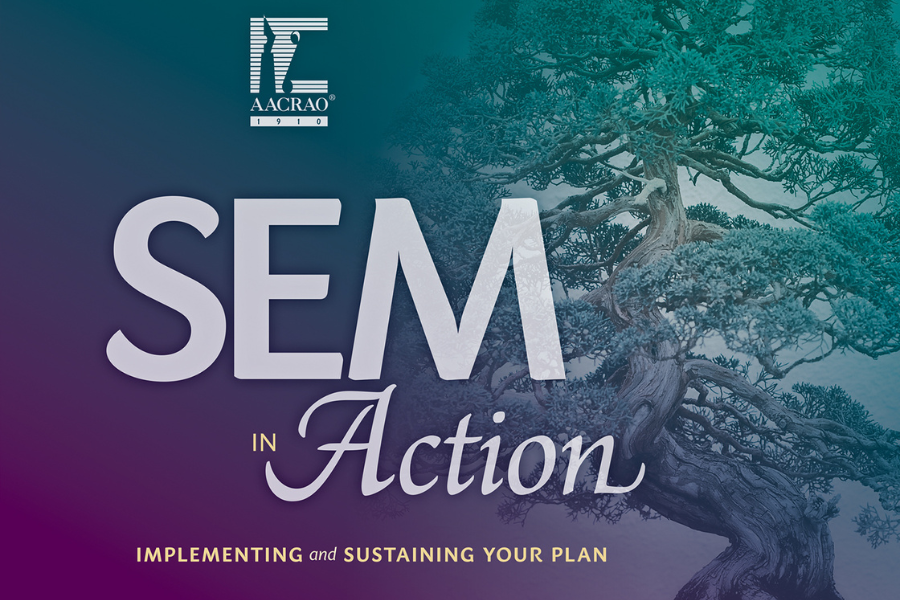
By Jody Gordon, AACRAO Managing Consultant, and Laura A. Wankel, AACRAO Senior Consultant
After a six-to-nine-month (at least) engagement involving a task force, committees, subcommittees, working groups, the executive, and your board, you finally have a Strategic Enrollment Management (SEM) plan. Congratulations, now what? Some may think they have made it to the finish line but in fact, you are just at the starting line. Providing SEM leaders with actionable steps when facing that starting line with their SEM plans is the focus of AACRAO’s newly released book, SEM in Action: Implementing and Sustaining Your Plan. As a living document, the work of SEM begins when the plan is completed and ready for implementation. Developing the plan is the first step, connecting it to all that we do is the second, implementing it is the third, and sustaining it is the fourth. This book is then about SEM in action, about how to bring to life the strategies and tactics from the plan in order to improve student success and enrich the health of the institution and its community. It is about ensuring through SEM that the college continues to achieve what it aspires to be.
How to Use it
The book is set out in two sections – the theory behind SEM in action and the case studies to demonstrate it. One chapter outlines a concept for leading the college through significant planning fatigue, a concept that can be used during the development of the plan but also throughout the entire implementation of the plan. The next chapter discusses the steps to take when beginning the implementation of the plan: organizing for planning including structure for oversight, decision-making, and accountability; use of data to inform decisions and to drive further assessment as a means for gaining insight into the success of the tactical deployments; and finally, communication as an enterprise-wide approach to engaging the various stakeholders, promoting the intended goals, manage expectations on plan outcomes and to respond to challenges and opportunities faced during the life of the plan. And finally, the last theoretical chapter takes the reader through the ongoing effort needed to sustain the plan: enriching a culture of assessment; building and designing for long-range success; leading through change; innovative activities to grow and sustain campus-wide engagement; and finally, guiding questions to sustain the plan for the long run. Both of these chapters provide examples from the field to highlight these efforts.
Since this book is by practitioners, for practitioners, there are five very unique, yet remarkedly similar, case study chapters to demonstrate SEM in action. They represent a cross-section of institutional types, and all include critical elements to successful SEM plans such as the use of data to enable evidence-based decision-making, leadership engagement, structured groups with focused areas of work, and broad communication and assessment plans both during the planning and implementation stages of their work. Naturally, these examples provide perspectives that are over varying lengths of time, and populations served, and present differing environmental circumstances, stakeholder and governance structures as well as challenges and opportunities. And yet, as Stanley E. Henderson writes in the Forward to the book, “I am struck how, despite the unique experiences and methods, they are thematically similar…One of the great values of SEM in Action is the strategic checklist of themes to address in the vernacular of your campus.”
To read on check out SEM in Action: Implementing and Sustaining Your Plan available now at the AACRAO Bookstore (discount for AACRAO members).